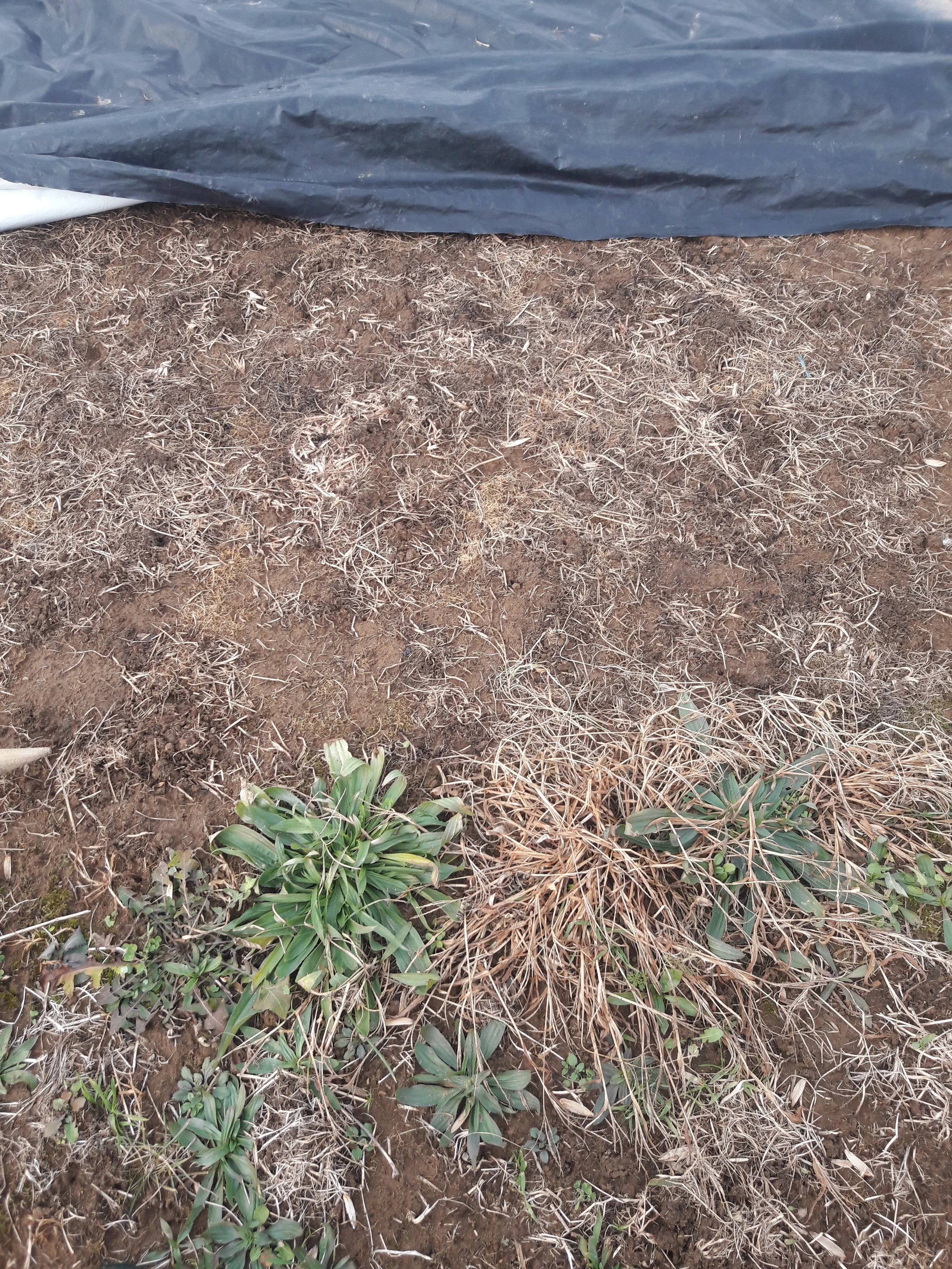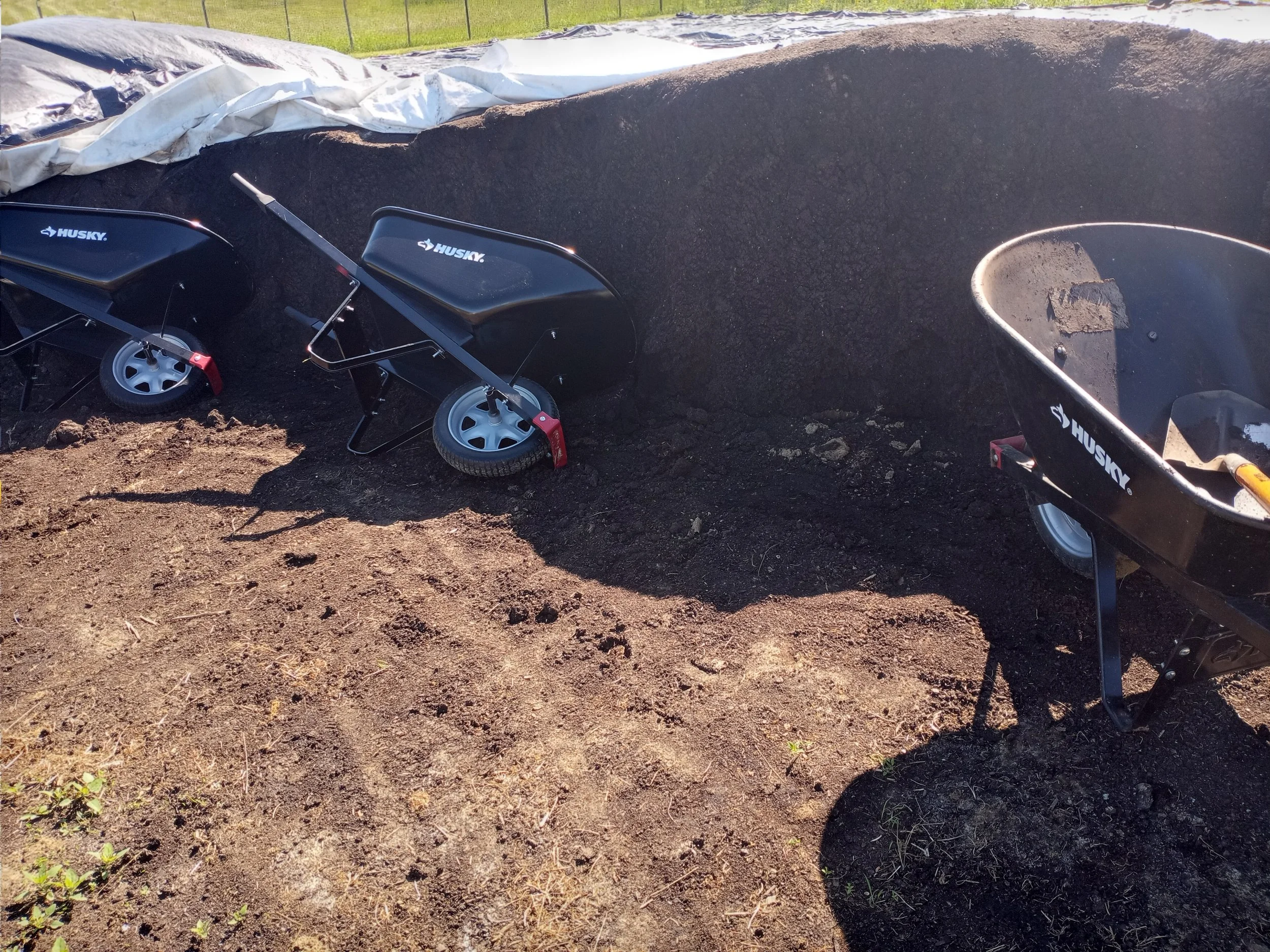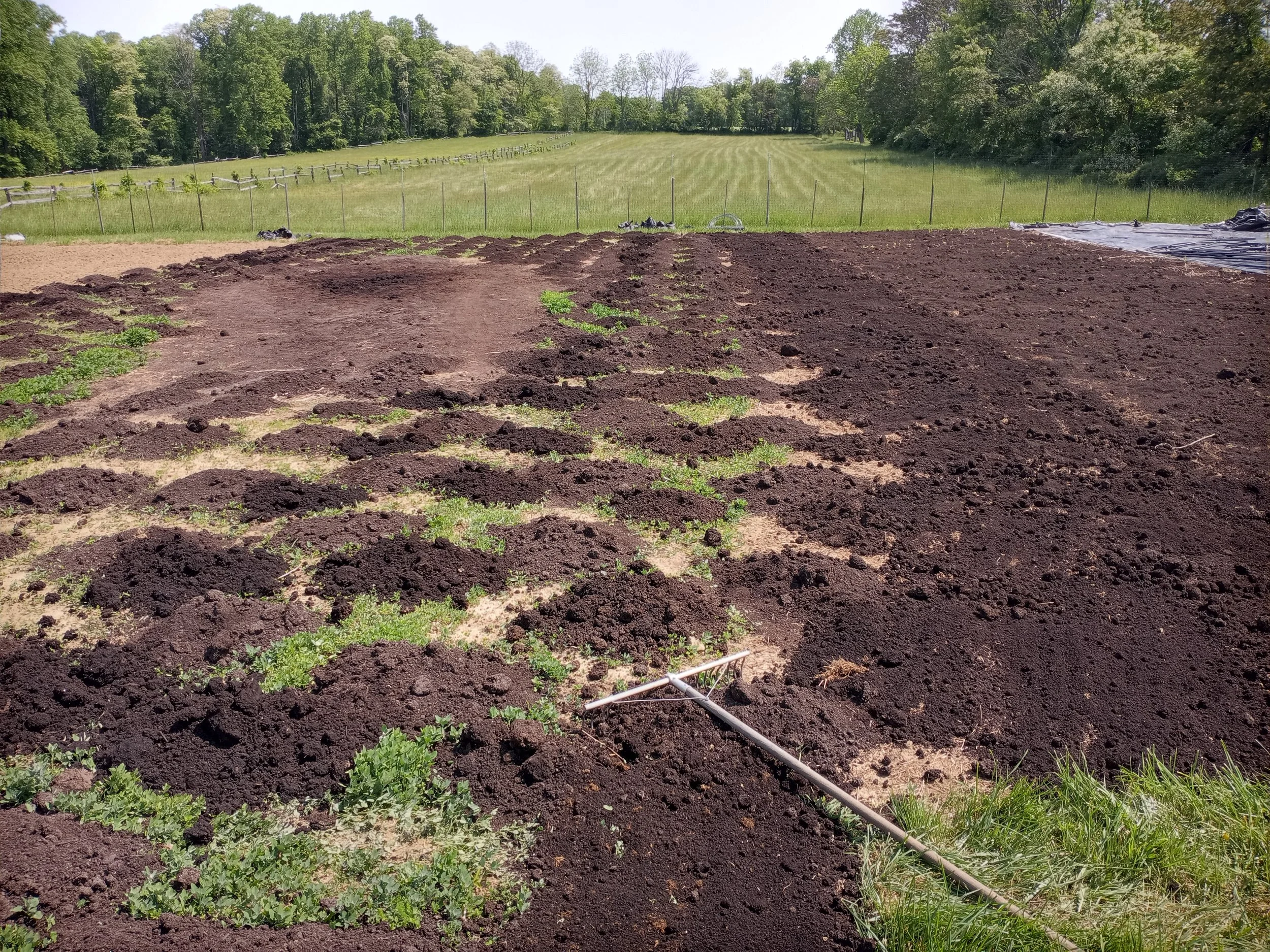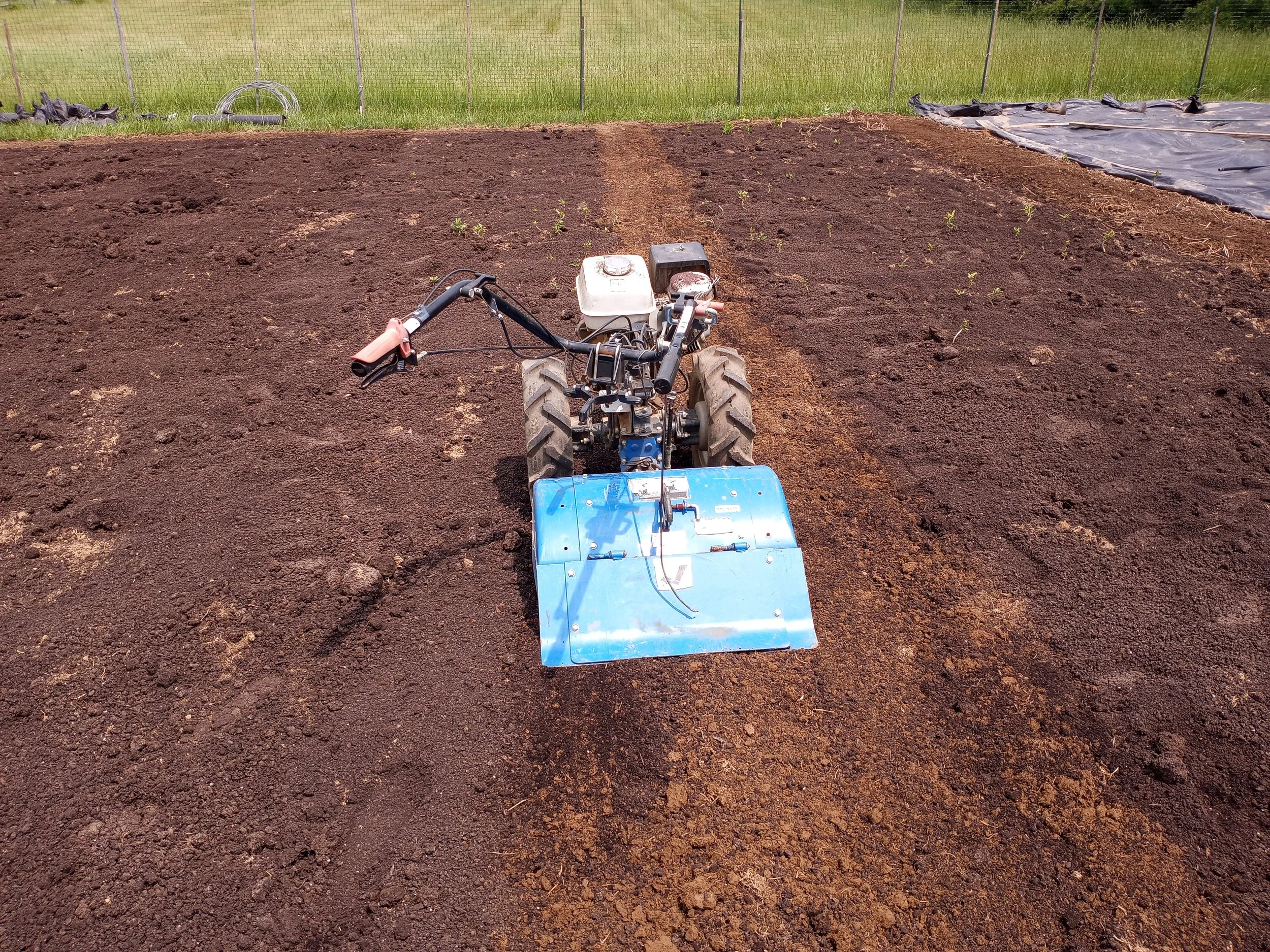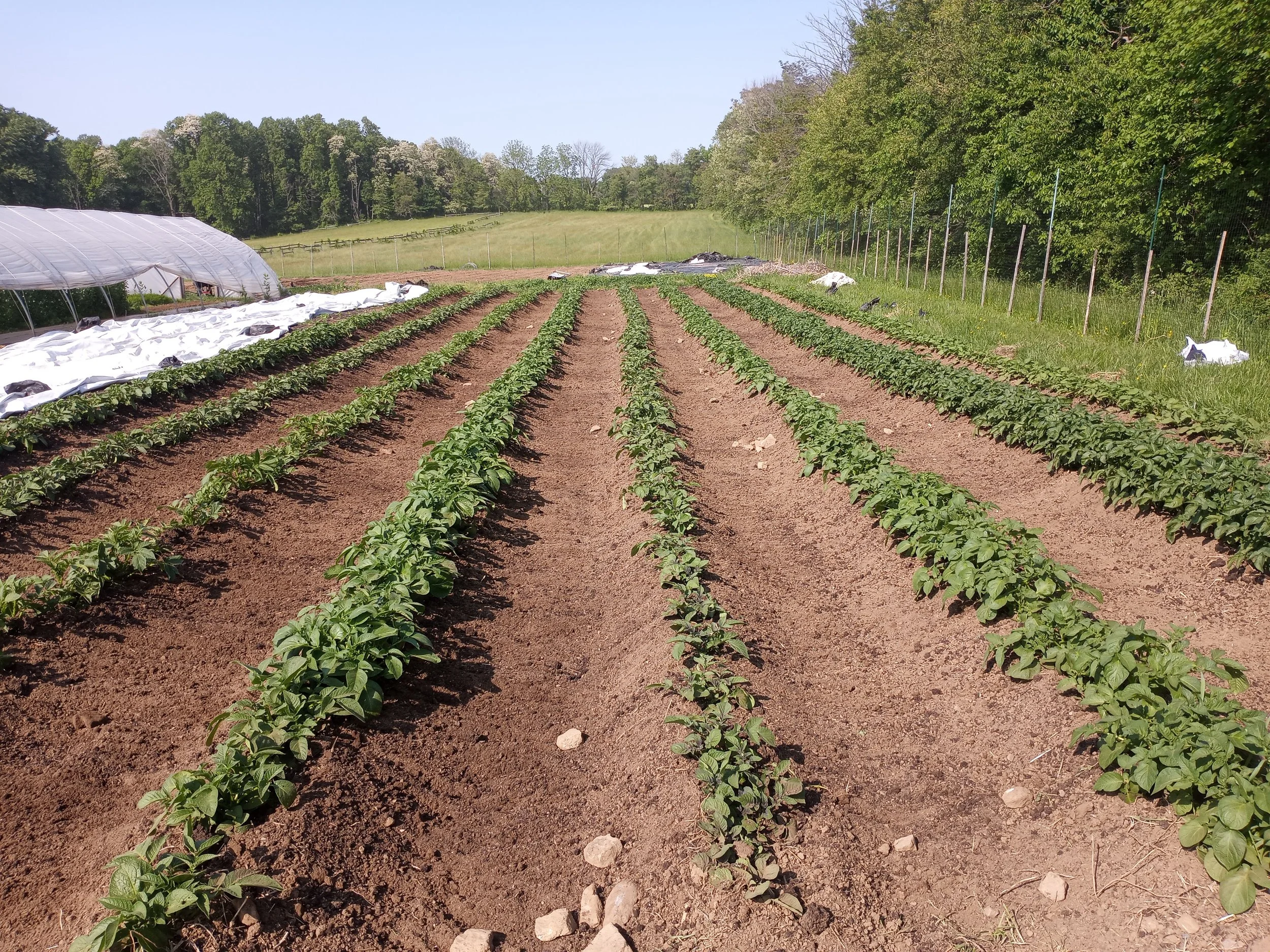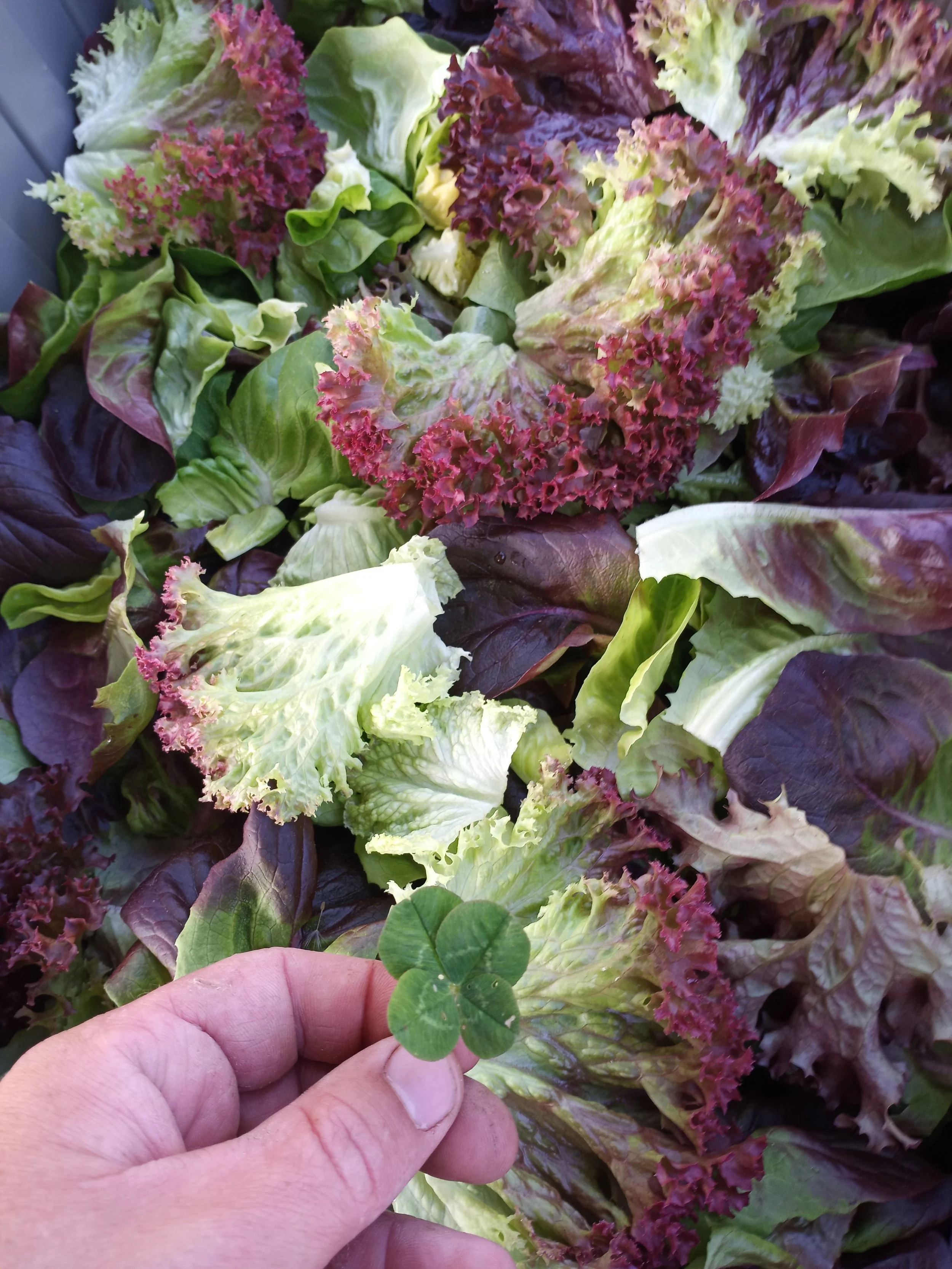New Plot
Last year we decided we need more 100 foot beds for our longstanding crops like potatoes, sweet potatoes, brassica crops, tomatoes, peppers, and eggplants. These crops that are in the field for 90 days or longer are best suited for our longer beds, allowing us to utilize our shorter beds for the fast turn over crops that are out under 45 days like our baby greens, radishes, and turnips. Having these beds will allow us to better succession these fast crops that are in high demand, while having enough space for the summer favorites that produce a little over a long period requiring a lot of plants to feed the demand.
After almost a year under tarp, the biology incorporated the perennial grass and its roots quite nicely. Before setting the tarp, I mowed the grass down at about 12 inches high two times to act more or less as a cover crop or green manure, adding organic matter to the soil that has been taken by cutting hay for many years. After a couple of mows, I weed wacked the grass as tight as I could to the ground, yes that was a lot of weed wacking. After tarping we are left with a relatively compacted soil that is heavy but not terribly on the clay side which is a great start.
This year we have spread 120 cubic yards of compost by wheel barrow. That truck pictured makes 60 cubic yards on the new field. After composting our original 100 foot beds we were left with about 45 or 50 yards to incorporate into the new beds.
After popping two wheel barrow tires already this season (mostly my fault for bad repairs) it was time to upgrade the fleet to this here sled team with flat free tires.
Maybe it popped because I replaced a bolt with a ground staple? Time is money and farm grade gets it done till it doesn’t.
Almost there. Wishing there was another few yards… never enough compost.
Raking out the piles for even coverage. You can see where the tarp was off for a few weeks for the compost pile. This plot will be under ground cover for the first two seasons at least to help ensure the perennial grass is stomped out for good.
Using the BCS walk-behind-tiller to incorporate the compost and loosen the soil. The tarps worked great after such a long time, there were very little perennial roots left behind. Lets hope all the cutworms and wireworms have left after all the food ran out…
Hard to see but after tilling I use a 100 foot tape to measure out four foot centers. I use a string line to mark the four foot for walk ways and walk along the string to make a mark of where to rotary plow .
This is the rotary plow. This puppy raises the soil up to help us form our beds. Definitely a time saver but not perfect…
The initial plow is a little too farm grade even for me, so I go through with a shovel and shape the beds a little better. Not much better, because my forearms are indeed burning.
On the left you can see some of the finished raked out beds, and on the right some beds yet to be raked. I just finished the beds today and starting laying out the irrigation line and drip tape along the beds. Tomorrow I will finish up with the ground cover across the whole plot and we are ready to plant the summer crops. Our thoughts and prayers go out to any farmers and gardeners who lost any sensitive crops in the late and unexpected frost we had the other night. One reason we like our scale, is we can be flexible and do things like triple cover our propagation house seedlings and double cover our beans outside.
Good luck potatoes. Composted before hilling. (Not new plot)
Post hill potatoes. Could you say postatoes? Sorry I’m about delirious at this point. Oh, what’s that in the background? The tarp on the new plot has moved over to stomp out a few more beds you say? Maybe 40 total beds on the new plot!?
Good luck lettuce mix. Good luck friends.

